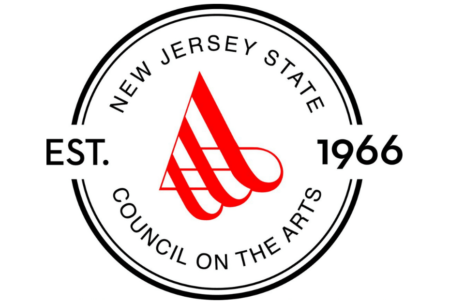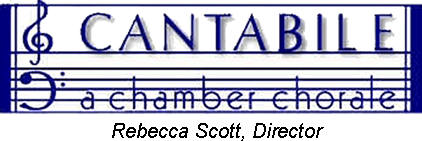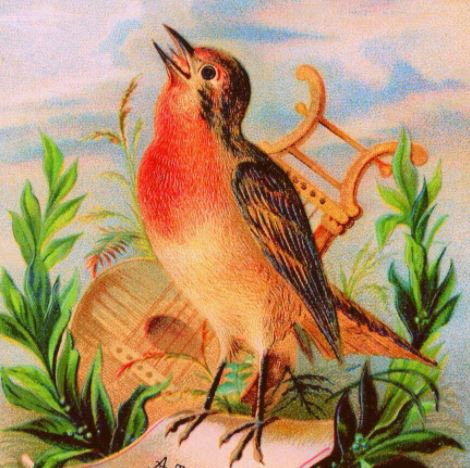Sing Sweetly, Sing Gently Program Notes
PROGRAM NOTES, TEXTS, AND TRANSLATIONS
To read full program notes and see ads from business supporters for December 4, 2021 concert
Here we are-where we could not have imagined that we would be, singing in masks after a year and a half of silence. Well, not exactly silence. We sang on ZOOM until September 2021, but on ZOOM, we only heard ourselves. So, we decided to take a chance and return to masked in-person singing. We are grateful you are here to listen to us sing together-gently, sweetly- and with hope for more singing this spring. We will take a brief break- to breathe -and listen to flute, cello, and piano sounds, and then return to song. There will be no intermission during the concert and no gathering after the performance. We will end our concert on a positive note with a song popularized by Louis Armstrong (1901-1971) in 1967, What a Wonderful World composed by George Weiss and Bob Thiele. “Satchmo,” as Armstrong was known, was an American trumpeter and singer, and had a charismatic style of performance which made people feel happy and gave him a career of five decades in jazz and popular music. With his gravelly voice, used with skillful improvising and bending of the melody for expression, his singing became instantly recognizable. A middle school principal whom I knew, played this song every morning as the children got off the bus, hoping that they all would enjoy their day. As you leave tonight, we hope you will feel positive vibrations coming from our masked throats and remember that this is a Wonderful World, and you are part of what makes it that way!
We will exit quickly and meet you outside where we can breathe freely and talk. Feel free to sing along with our last refrain because it still is a “wonderful world!”
Thank you for attending our performance! We hope you will join us again when we will premiere three new compositions in April 2022. Until then a joyful holiday season to you all!
Rebecca Scott, Artistic Director and Conductor
*****
PROGRAM
CANTABILE CHAMBER CHORALE
Rebecca Scott, Artistic Director and Conductor
Lynne Stallworth, piano
Anita Gould, flute Jordan Enziger, cello
Sing Gently, Eric Whitacre
*****
Song for Snow, Florence B. Price
*****
Ubi Caritas, Maurice Duruflé
*****
Air on the G string, J.S. Bach
*****
Coventry Carol, Henry Walford Davies
Ruth Anderman, Anita Gould, Jerry Phillips,
Ali Ekrem Yesilkanal: Verse 1
Larry Cohen, Eileen Silverstein, Rick Snyder,
Gail Tilsner: Verse 2
Nancy Engel, Jerry Phillips, Jaime Ross,
Elizabeth Verderosa: Verse 3
*****
O Magnum Mysterium, Francis Poulenc
*****
Song Without Words (A major), Florence B. Price
flute and piano duet
*****
Song Without Words (D major, opus 109), Felix Mendelssohn
cello and piano duet
*****
How Can I Keep From Singing, .arr: Pete Seeger
*****
This Is My Song, Jean Sibelius
*****
I Have A Dream, Noel G. Da Costa
*****
Give Us This Day, Ward Swingle
*****
What A Wonderful World, Bob Thiele and George David Weiss
*****
REBECCA RUTH SCOTT, Founding Artistic Director of Cantabile, was born in New Brighton, Pennsylvania, surrounded by music, art, and poetry. She holds a Bachelor of Music in Piano and Vocal and Choral Education from the Eastman School of Music, and a Master of Science in Choral Conducting from The Juilliard School. Now in her 34th season as artistic director of Cantabile, Ms. Scott has conducted over 35 premieres of new choral works with Cantabile. Her commitment to fostering and promoting new music garnered the Chorus America/ASCAP Award for Adventurous Programming for Cantabile. She continues to teach ear training as a member of the faculty in the college division of The Juilliard School.
LYNNE STALLWORTH, piano, grew up in Westerly, Rhode Island, where she began playing the piano at the age of five. Although encouraged to pursue piano performance as a profession, Ms. Stallworth chose to expand her knowledge and experience in other areas in college, including studying jazz piano at New England Conservatory of Music. She holds a Bachelor of Science in Physical Therapy, a Master of Public Administration from Rutgers University, and a Doctor of Physical Therapy from Simmons College, Ms. Stallworth is Director of Music Ministry at Christ United Methodist Church Piscataway and is in her 12th year accompanying Cantabile Chamber Chorale.
With a versatile background in solo, chamber, and orchestral music, DR. JORDAN ENZINGER is a dynamic, performing cellist in the New Jersey, New York City, and Philadelphia areas. He regularly performs in the area’s finest venues such as Carnegie Hall, Lincoln Center, and the Kimmel Center. Dr. Enzinger is a member of the cello section of the American Symphony Orchestra, and has performed with the Orchestra of St. Luke’s, New Jersey Symphony, Princeton Symphony, Princeton Festival Orchestra, and the New Brunswick Chamber Orchestra.
ANITA GOULD has been playing flute since the age of 10, studying with James Sabo, Svetlana Kabalin, Dorit Winter and Amy Borman. She has a PhD in molecular biology from Caltech and credits her participation in chamber music and choral music with preserving her sanity during her graduate studies. She joined Cantabile in 2005, where she met her husband, Rick Snyder.
CANTABILE CHAMBER CHORALE
| |
|---|
| Soprano I | Tenor I |
| Ruth Anderman | Larry Cohen |
| Kaitlin Dunn | Mickey Diener* |
| Katherine Lainhart | Jerry Phillips |
| Elizabeth Whitehead* | |
| |
| Soprano II | Tenor II |
| Mitzi Lasky | Ray Nolan |
| Yeung-gyo Shin | Gerry Spelrem |
| Gail Tilsner | |
| |
| Alto I | Bass I |
| Poldi Binder | Jaime Ross |
| Nancy Engel | William Whitehead* |
| Lynne Motto* | Ali Ekrem Yesilkanal |
| Elizabeth Verderosa | |
| |
| Alto II | Bass II |
| Anita Gould | Dan Sillitti* |
| Eileen Silverstein | Rick Snyder |
| Jean Thomas | |
*Not singing this concert
*****
Sing Gently was written in March 2020 by Grammy Award-winning composer and conductor, Eric Whitacre (b.1970) in reaction to the COVID-19 crisis, to “give some small measure of comfort for those who need it, and that it might suggest a way of living with one another that is compassionate, gentle and kind.” It premiered online on July 19, 2020, performed by the 17,572 singers of Visual Choir 6, created by Whitacre. Music and words are by Eric Whitacre.
May we sing together, always, may our voice be soft.
May our singing be music for others and may it keep others a loft. Sing, sing gently, always. Sing, sing as one.
May we stand together, always, may our voice be strong. May we hear the singing and may we always sing along. Sing, sing gently, always. Sing, sing as one, as one.
Sing gently as one.
Florence B. Price (1887-1953) set the music for Song for Snow, from a 1932 New Yorker poem by Elizabeth Coatsworth. This musical setting is as light as the falling snow with changes of meter and tempi creating a picture of a lovely winter scene.
Song for Snow Text by Elizabeth Coatsworth
The earth is lighter than the sky,
The world is wider than in spring,
Along white roads the sleighs go by.
Icily sweet the sleigh-bells ring.
The birds are gone into the south,
The leaves are fallen to the ground.
But singing shakes each sleigh-bell’s mouth,
and leaf-like ears turn towards the sound.
*****
Ubi Caritas from Quatre Motets (sur des themes gregoriens) by Maurice Duruflé. The Gregorian chant Ubi Caritas is the final antiphon sung during the Mandatum on Maundy Thursday. Maurice Duruflé (1902-1986) opens this short motet with the melody in the alto voice accompanied by the seventh chords of twentieth century harmony. The soprano voice takes the melody on the word Exsultemus (Let us rejoice) with accompanied voices building blocks of beautiful sound under the chant. The motet ends with the chant repeated in the alto voice.
| |
|---|
| Ubi caritas et amor, | Where charity and love are, |
| Deus ibi est. | God is there. |
| |
| Congregavit nos in | Love of Christ has gathered |
| unum Christi amor. | us into one. |
| |
| Exsultemus, et in ipso | Let us rejoice in Him and |
| jucundemur. | be glad. |
| |
| Timeamus, et amemus | Let us revere and love |
| Deum vivum. | the living God. |
| |
| Et ex corde diligamus | And from a sincere heart |
| nos sincero. | let us love one another. |
| |
| Ubi caritas et amor, | Where charity and love are, |
| Deus ibi est. | God is there. |
The Air on the G String is an arrangement of the second movement of Johann Sebastian Bach’s Orchestral Suite No. 3 in D Major, BWV 1068. In 1871 August Wilhemj moved the key to C Major so that the violin part could play the entire melody on the low (G) string. Since then, the piece has been arranged for many different instruments including choral voices. Our arrangement (thanks to Gerry Spelrem for this arrangement) is in Ab, so that the bass voices can more easily reach the bottom notes. The cello takes the melody in the second iteration of the melody.
*****
Coventry Carol is the second of three songs from one of the Coventry Mystery Plays which were performed by Guilds in the city of Coventry, England from 1392 onwards. The plays depict the Christmas story from chapter two of the Gospel of Matthew. This song is from the Pageant of Shearmen and Tailors. The text refers to the Massacre of the Innocents when Herod, looking for the baby Jesus, ordered that all male infants under the age of two in Bethlehem be killed. It is a lullaby sung by mothers of the doomed children. The original three-voiced mothers’ part was sung by men. The author is unknown; the oldest known text was written down by Robert Croo in 1534, and the oldest known setting of this melody dates from 1591. Coventry Cathedral was bombed in 1940 during World War 2. Shortly afterwards at Christmas, the BBC’s Empire Broadcast concluded with the singing of this carol in the bombed-out ruins of the Cathedral.
Coventry Carol
Refrain:
Lully, lulla, thou little tiny child. By, by, lully, lullay, –
Lullay thou little tiny child, By by, lully lullay.
O sisters too, how may we do for to preserve this day –
This poor youngling, for whom we do sing, By by, lully lullay?
Herod the king, in his raging, charged he hath this day –
His men of might, in his own sight, All young children to slay.
That woe is me, poor child for thee! And ever morn and day, –
For thy parting neither say nor sing. By by, lully lullay!
*****
O Magnum Mysterium is the first motet in a group called Quatre Motets pour un temps de Noel (1952) by French composer and pianist Francis Poulenc (1899 – 1963). Poulenc became a fine pianist under the tutelage of his mother but was expected to follow his father into business and was not allowed to enroll in a music school. Therefore, he learned to compose by knowing the music of Mozart and other greats. Around the 1930s he began to write sacred music after reconnecting with his Catholic faith. He became a member of Les Six, a group of young composers in Paris who embraced the Dada movement’s techniques. This motet begins with five measures of chords of uncommon relationships but in the tonal context of Bb minor. A beautiful descending melody in the soprano takes over and returns continuously through-out the motet with slight and pointed changes to express the words. Sudden dynamic changes accentuate the “mystery and “awe” of the Christ child being born in a manger amongst animals looking on.
O magnum mysterium, et admirabile sacramentum,
O great mystery and wonderful sacrament,
ut animalia viderent Dominum natum,
that animals should see the newborn Lord,
jacentem in praesepio!
lying in a manger!
Beata Virgo, cujus viscera meruerunt portare
Blessed is the virgin whose womb was worthy to bear
Dominum [Jesum] Christum. [Alleluia!]
The Lord [Jesus] Christ. [Alleluia!]
*****
Pärt Uusberg (b.1986) sets the poem of Juhan Liiv, Muusika (Music) as a series of ringing tones like striking bells in chant like fashion first in women’s voices, then in men’s voices, then in a second section of six voices repeating the words “teardrops” getting louder, then softer and returning to the original striking tones now in four voices to end peacefully. Music has been an important part of Estonian culture through communal singing. It has held together the Estonian communities through difficult times, as shown in the film The Singing Revolution.
Muusika (Music) words by Juhan Liiv
Kuskil peab alguskokkukõla olema, kuskil suures looduses, varjul.
Somewhere the original harmony must exist, hidden somewhere in the vast winds.
On tema vägevas laotuses, täheringide kauguses, on tema päikese sära sees,
In Earth’s mighty firmament, in the far reaches of swirling galaxies
Lillikeses, metsakohinas, emakõne sűdamenmuusikas või silmavees—
In sunshine, in a little flower, in the song of a forest, in the music of a mother’s voice, or in teardrops—
Kuskil peab surematus olema, kuskilt alguskokkukõla leitama.
Somewhere, immortality endures, and the original harmony will be found.
Kust oleks muidu inimese rinda saanud ta— muusika?
How else could it have formed in human hearts— music?
*****
Song Without Words in A Major (1932) was composed for piano solo by Florence B. Price, but it lends itself so beautifully for two instruments that I have added a flute for the melody. We are grateful to have Anita Gould play the flute for us tonight with Lynne Stallworth on piano while the singers take deep breaths. Composer and pianist Florence Beatrice (Smith) Price (1887-1953) was well educated, learned piano from her mother, and read vociferously from her dentist father’s library. By age 4 she was a promising pianist. Later she composed piano pieces, songs, choral music, orchestral music and eventually became the first black female composer to have a symphony performed by a major American orchestra. The Chicago Symphony Orchestra played the world premiere of her Symphony No. 1 in E minor on June 15, 1933. Her works have been recently re-published. See www.florenceprice.com.
Felix Mendelssohn (1809-1847) composed eight volumes of Songs Without Words throughout his life. Each volume contained six short “songs” for piano solo, light and lyrical in nature. In 1845 he composed a piece in D Major for cello and piano dedicated to Lisa Cristiani, cellist. This was published after his death and given the title Song Without Words, but it is not related to the piano pieces by the same name and was the last piece that he composed for cello. We are fortunate to have Jordan Enzinger here tonight to play this piece for us with Lynne Stallworth. While our singers take a chance to breathe deeply, we are grateful to listen to the beautiful sounds of the cello and piano.
*****
How Can I Keep from Singing, and This is my Song, express our feelings about singing and how songs contribute to the peace, beauty, and security of our world. Pete Seeger (1919-2014) used to sing How Can I Keep from Singing at many of his concerts, and this is one of his arrangements. The writer of the words was Englishman George Fox, an early founder of the Society of Friends (Quakers), who was imprisoned for his beliefs. The music for This is my Song was composed by Jean Sibelius (1865-1957) in 1899. The English words were set to the tune by Lloyd Stone in 1934.
I met Noel da Costa (1929-2002) when I was singing one of his compositions while we were both on the faculty of Rutgers University, at some time in the 1980s. When he heard that I had a chorale, he told me about his setting of Martin Luther King, Jr’s excerpt from The Lincoln Memorial Speech. Since then, Cantabile has sung I Have a Dream many times. Dr. da Costa was born in Nigeria to Jamaican parents who were missionaries for the Salvation Army. His early schooling was in Jamaica. When he was ten, they all moved to Harlem. After education at Queens College and Columbia University, he taught in many colleges and ended up at Rutgers from 1970-2001. He was a co-founder of the Society of Black Composers and a conductor and fine violinist in addition to being a composer of jazz, Caribbean, and African styled music and what the New York Times called “conservatively chromatic” music. I Have a Dream has an obvious Gospel feel with some meter changes and jazz “licks” to express the joy and complexity of the words. Dr. King was quoting from the Bible, Isaiah 40, verse 4.
I have a dream that one day, every valley shall be exalted, every hill and mountain shall be made low.
The rough places shall be made plain, and the crooked places will be made straight, and the glory of the Lord shall be revealed, and all flesh shall see it together.
This is our hope. This is our hope. This is our hope. This is our hope.
*****
Give Us This Day was commissioned by the Vasari Singers from English composer Ward Swingle (1927-2015), composer, arranger, and director of the Swingle Singers, who were famous in the 1960s for their excellent recordings of popular music and the works of J S Bach sung in jazz style. This setting of words by Tony Vincent Isaacs is homophonic in 20th century 7th and 9th chords. The recurring refrain is a prayer for insight. It calls for us to cherish the gift of our very beautiful earth and to protect it for the future generations. This is one of Cantabile’s favorite choral pieces! We sing it tonight hoping we all will concern ourselves with the wellbeing of our earth.
Give Us This Day words Tony Vincent Isaacs
Scudding clouds of crimson flush, skim the azure evening sky,
Boding well the morrow’s dawn—To a cloudless glowing morn.
Dragon fly, neon’s treasure, strafes the pool in summer’s hush,
Give us this day that we may see the beauty before our eyes.
Give us this day that we may cherish the earth before it dies.
Curfew closing on the light, pungent wood smoke curling by,
Autumn leeching summer cold, breathing out in red and gold,
Flocking high o’er tall oak, storks migrating full in flight.
Give us this day that we may see the beauty before our eyes.
Give us this day that we may cherish the earth before it dies.
All along the trestle bough, incandescent to the touch,
Icy chandeliers a blaze to the sun’s retreating rays.
In the clutch, omnipresent, of the north wind’s bitter vow.
Give us this day that we may see the beauty before our eyes.
Give us this day that we may cherish the earth before it dies.
Morning creeps upon the day, stars pay homage to the sun.
Tumult in the swelling bud, ripening with verdant blood,
Surging through the winter’s damage, weaving tendrils on its way.
Give us this day that we may see the beauty before our eyes.
Give us this day that we may cherish the earth before it dies.




